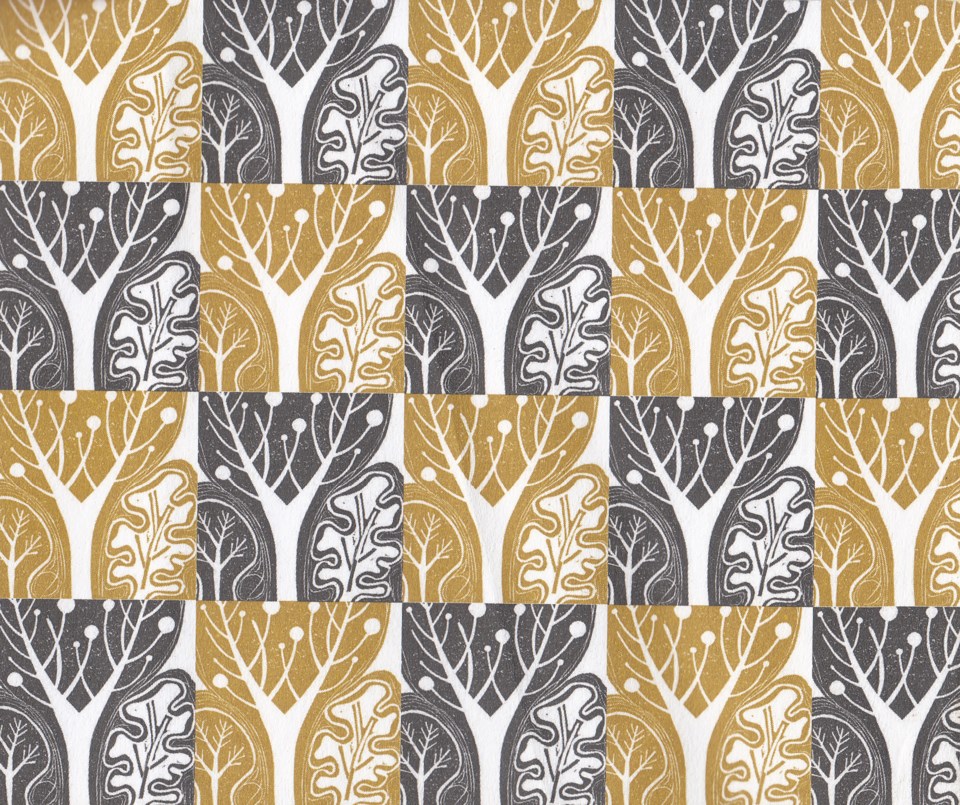There was a time when the book market as we know it today – obsessed with profits, dividends for its shareholders – didn’t exist. Making books to sell used to be a vocation, or a profession. Books were prized possessions. Creating them was a craft, and sometimes an art.
What started me thinking along this track was a review I read of two books on trees – one, Peter Wohlleben’s The Hidden Life of Trees (English translation, 2016), the other Fiona Stafford’s The Long, Long Life of Trees. Richmond Public Library has Wohlleben’s book, but you’ll find Stafford’s only in the Vancouver Public Library. Stafford’s intrigued me – seventeen essays about seventeen trees, including my favourites – the oak and the hawthorn.
When I finally had Stafford’s book in my hands, I marvelled. It made me think of books created with the kind of care that had once been normal, even a hundred years ago. Before digital technologies were developed, skilled craftsmen made books, and press runs were comparatively low. But Stafford’s book was produced in 2016 by a major publisher, Yale University Press, with a standard press run. Yet it had the look and feel of a book that was the result of much more care and artistry than I usually detect in books produced in the digital age.
So, what was it about The Long, Long Life of Trees that caught my attention? It was what I saw the moment I opened the cover – namely the endpapers decorated with a pattern of stylized trees and leaves. In most other modern books I’ve encountered, the endpapers are blank; Stafford’s book harks back to a centuries-old tradition.
I went to Richmond Public Library to check Wohlleben’s book – its endpapers were green and undecorated. On the shelf next to Wohlleben was another book on trees, Ben Raskin’s Plant a Tree and Retree the World, published in 2022. To my delight, it, too, has decorated endpapers, these with various tree leaves, fruits and seeds. In fact, decorated endpapers appear to be having a kind of renaissance as a proper art form; children’s books have adopted them with enthusiasm.
The 2016 review that I read about Stafford’s and Wohlleben’s books did not mention their physical characteristics because reviews tend to focus on a book’s contents. Such details will be given in the front matter, which can be found on the reverse of the title page or across from it. In addition to information about copyright and the publisher, the front matter can include the name of the book’s designer and particulars about the paper it was printed on. For instance, the front matter in Wohlleben’s book states it was “printed on ancient-forest-friendly paper by Friesens” and that Nayeli Jimenez (a communication designer and vice-chair of the local Wilderness Committee) was responsible for the jacket and interior design.
In the front matter of Raskin’s book you’ll find the label “FSC MIX.” FSC (Forest Stewardship Council) labels – FSC 100%, FSC MIX, FSC Recycled – are found on a multitude of products worldwide. The paper used for Raskin’s book was “made with a combination of FSC virgin fibre, and/or recycled materials with controlled virgin fibre.” The design of Raskin’s book was entrusted to a young British graphic designer, Tina Hobson. I went to her website where I read the term “keep-forever books,” which she uses to describe the kind of books she designs. It’s a perfect descriptor.
Perhaps, if more attention were paid to the physical qualities of a book – how it feels to hold, if the colour and texture of the paper and the typeface enhance its readability – there would be even more people tiring of e-books and (re)turning to physical books, to “keep-forever books,” sold in real brick-and-mortar bookstores.
Sabine Eiche is a local writer and art historian with a PhD from Princeton University. She is passionately involved in preserving the environment and protecting nature. Her columns deal with a broad range of topics and often include the history (etymology) of words in order to shed extra light on the subject.



